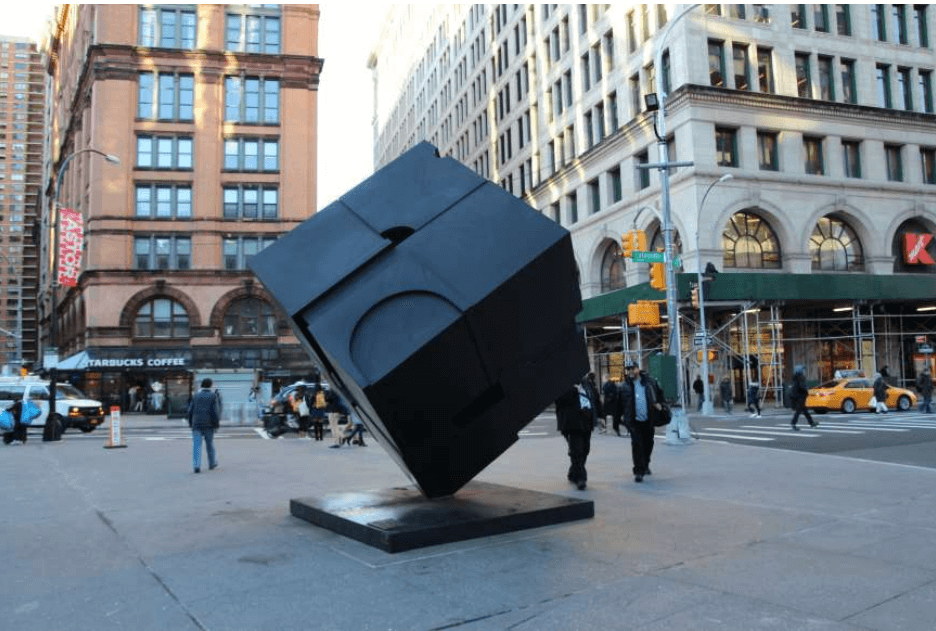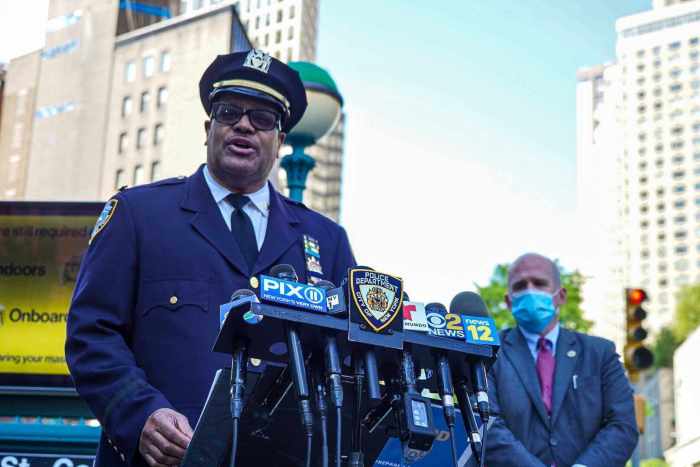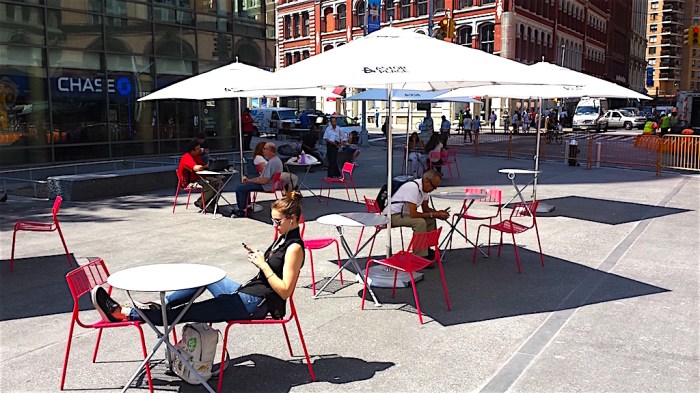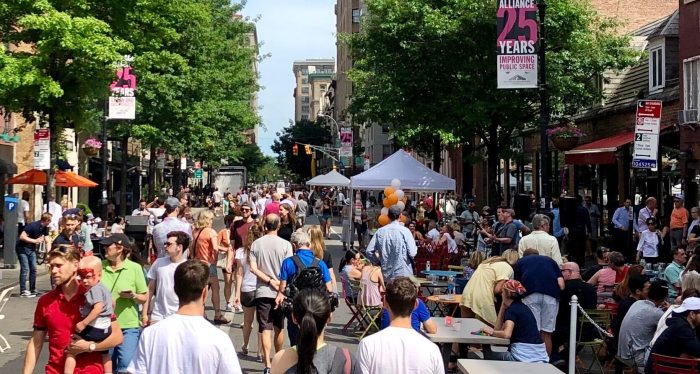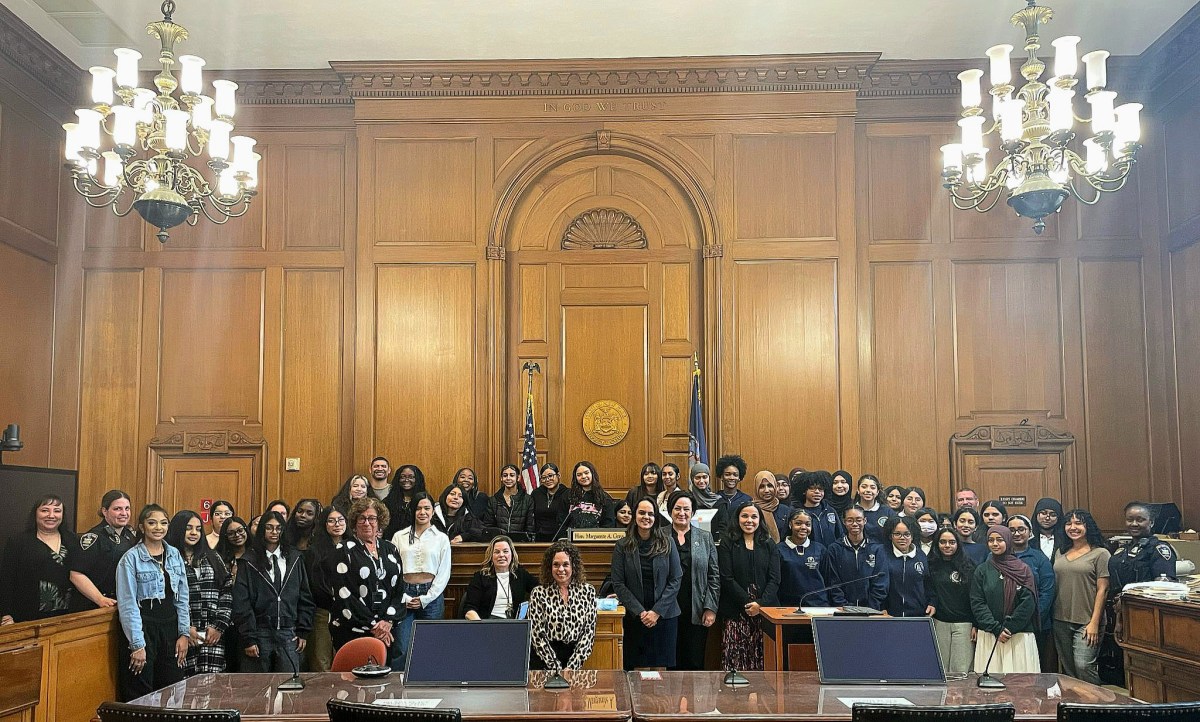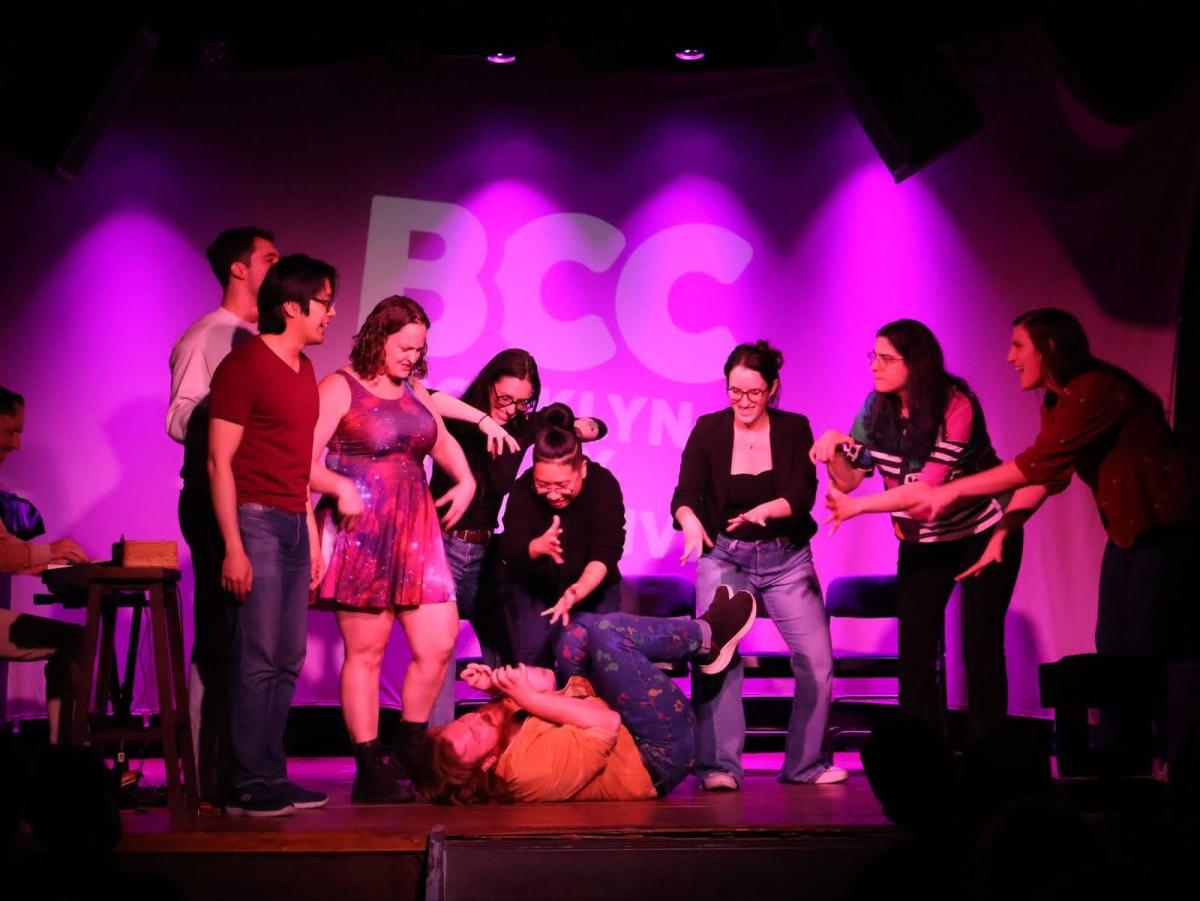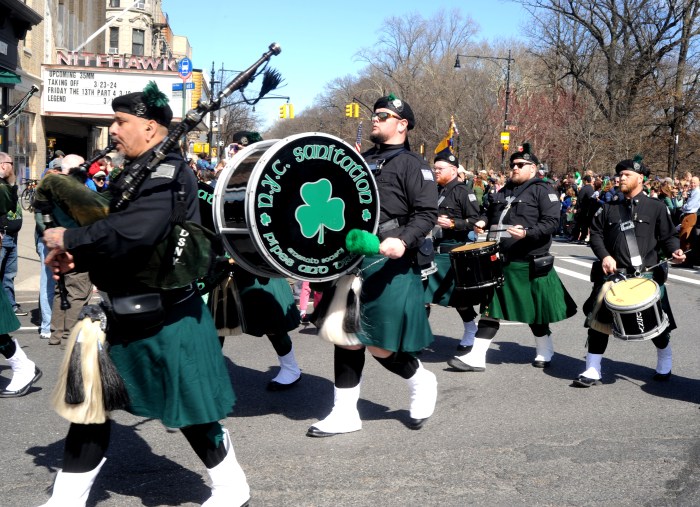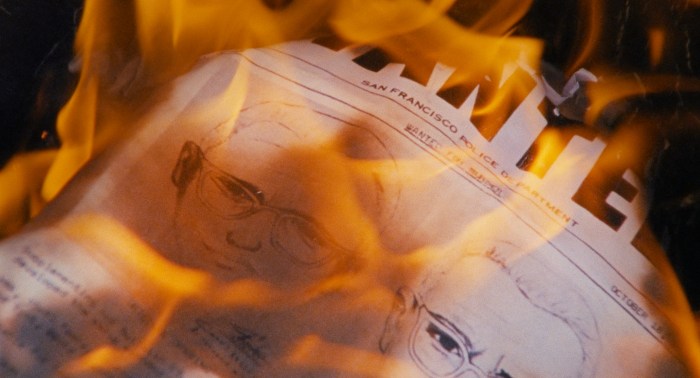The enormous cube at the East Village’s Astor Place is set to spin once again by summer after a full restoration of the iconic, interactive sculpture.
The 15-foot, 1,800-pound cube, sculpted by artist Tony Rosenthal and installed at Astor Place in 1967, has not spun since December 2021 following the identification of structural defects, according to a presentation to the city’s Public Design Commission by Rosenthal’s estate and the city’s Department of Transportation.
They are proposing moving the cube offsite to Bethany, Connecticut in April for a full rehab in April, set to be complete by July. At that point, the cube, officially called Alamo, would be displayed at the Hamptons Fine Art Fair for one week before finally being restored to its whirly glory at Astor Place on July 17.
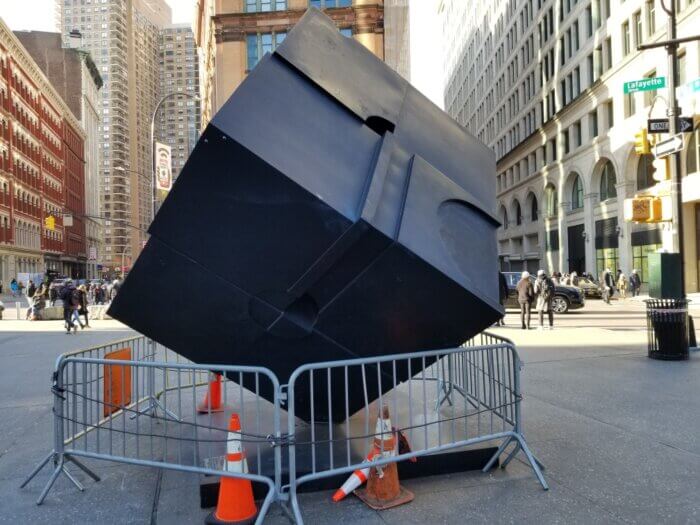
DOT and Rosenthal’s estate will present the plan to the Public Design Commission on Monday, March 20, The City first reported.
Generations of New Yorkers and tourists have blissfully rotated the massive cube, which sits precariously on the Astor Place pavement vertex-down, and spins about a pole hidden underneath its base. In 2021, the city received reports that the cube was separating from its base, causing it to tilt and potentially posing a danger of falling over.
At that point, the cube was surrounded by barricades to prevent public interaction, before DOT installed a set of brackets designed to hold the cube in one place and prevent it from twirling.
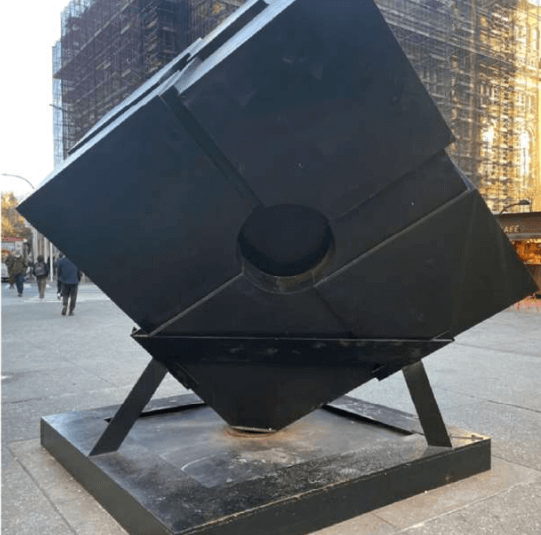
Per DOT, the last round of off-site restoration work from 2014-16 brought a new set of problems downstream for the steel sculpture. Shoddy lubrication work by New Jersey-based art restoration contractor Aegis Restauro has “compromised” the spinning mechanism, the agency reports. The grease fitting installed in 2016 does not “penetrate” the top load-bearing plate for “proper lubrication,” causing substantial structural deficiency at the base of the cube.
The steel plating Aegis Restauro surrounded the cube with has also accelerated corrosion by creating space for water to build up around the layer of steel.
To fix those issues, DOT and the Rosenthal estate contracted work out to Versteeg Art Fabricators, which had previously done restoration work on the cube in 2005. Versteeg’s proposal, which needs city approval, relies not on lubrication but instead on a “Teflon washer” installed between the load-bearing plates, which they say will relieve pressure on the plates when the cube is being rotated.
The design will allow for the cube to be lifted out of its base to efficiently replace the Teflon washer when needed.
Versteeg will also replace Aegis Restauro’s plating with new steel “patches” made of Cor-Ten steel, noted for its resistance to corrosion and tensile strength.
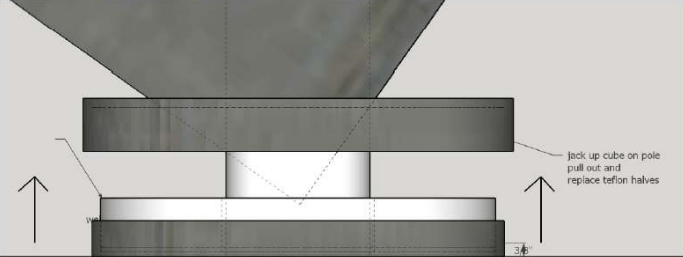
The cube was never meant to be a permanent fixture of the Village. It was installed in 1967 as just one of 27 public artworks displayed throughout the city for that year’s “Cultural Showcase Festival,” the New York Times reported at the time. But Village residents were quickly enamored by the sculpture and successfully lobbied for its permanent installation.
Alamo was just one of a bevy of cubes designed by the artist from the 1960s until his death in 2009. Rosenthal actually did not intend the sculpture to be rotatable: he told New York Magazine in 2005 that the spinning mechanism was only there to turn the sculpture to whatever orientation was deemed most befitting, ultimately to be bolted in place. But that never occurred, though Rosenthal didn’t mind, finding artistic merit in people’s interaction with his work.
Plenty of other Rosenthal works dot the cityscape. 5-in-1, a sculpture composed of five 15,000-pound, interlocking red discs (a metaphor for the five boroughs), has sat at 1 Police Plaza since 1974. Rondo, a giant bronze disc constructed in 1969, graces the front of the New York Public Library’s branch on East 58th Street.
Another sculpture, 1977’s Hammarskjold, has moved around quite a bit; it was originally at Dag Hammarskjold Plaza near the United Nations before moving to the Fashion Institute of Technology. In 2018, FIT gifted the piece to Brooklyn College, which placed the sculpture on its west quad.
The cube’s weeklong residency at the Hamptons Fine Art Fair, before its return to Astor Place, will coincide with Rosenthal’s posthumous induction to the Hamptons Art Fair Artists Hall of Fame. Rosenthal lived and worked in the Hamptons for decades.



